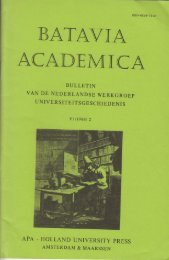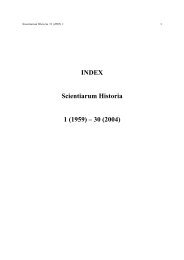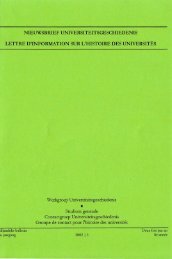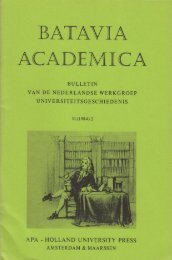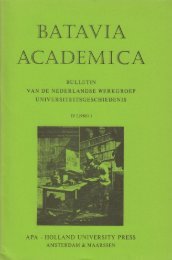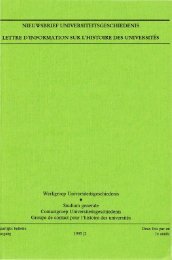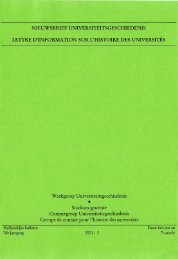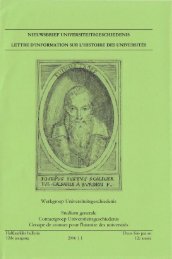Jaargang / Année 3, 1997, nr. 1 - Gewina
Jaargang / Année 3, 1997, nr. 1 - Gewina
Jaargang / Année 3, 1997, nr. 1 - Gewina
Create successful ePaper yourself
Turn your PDF publications into a flip-book with our unique Google optimized e-Paper software.
52 Lezingen en congressen I Conferences et congres<br />
In the first, the 'Humboldt phenomenon' - his extraordinary international<br />
renown - will be considered by looking at the historical geography of his<br />
reputation, addressing the question: 'Why did Humboldt become famous to the<br />
extent he did at particular periods and in particular countries, and what<br />
purposes did venerating him serve?' In the second session, the novel interest in<br />
non-verbal representation in the sciences will be brought to bear on Humboldt<br />
by discussing his relevance to nineteenth-century scientific visualization. In the<br />
third session, another recent theme of the historiography of science will be<br />
connected with Humboldt by venturing into the hitherto largely taboo domain<br />
of Humboldt's sexual proclivities, additionally exploring such issues as selfexperimentation,<br />
and asking the question: 'To what extent do body and gender<br />
matter?'<br />
Thursday, 29 May<br />
Nicolaas Rupke (Gottingen), The many Humboldts of the biographical literature<br />
Opening of the Conference Exhibition<br />
Friday, 30 May<br />
Towards a Geography of Humboldt's Fame<br />
Chair: Anthony Pagden (Cambridge I Johns Hopkins)<br />
Michael Dettelbach (Smith College I MPI fur Wissenschaftsgeschichte, Berlin),<br />
Surveying the landscape: Alexander von Humboldt as critic of the sciences<br />
Andreas Daum (German Historical Institute, Washington, DC), A hero<br />
invented: Alexander von Humboldt in the 19th-century American public sphere<br />
Roderick Home (Melbourne), Humboldtian imagery and 'the Humboldt of<br />
Australia'<br />
Wolfgang Boeker and Rainer Broemer (Gottingen), The German biographical<br />
construction of Alexander von Humboldt, between the Revolution of 1848 and<br />
the Franco-Prussian War<br />
Ingo Schwarz (Alexander-von-Humboldt-Forschungsstelle, Berlin), Alexander<br />
von Humboldt: socio-political views of the Americas<br />
Commentary by Charles Withers (Edinburgh) and general discussion<br />
Humboldtian Visualizations<br />
Chair: Martin Kemp (Oxford)<br />
Renate Loeschner (Ibero-American Institute, Berlin), Paintings of South<br />
American scenes by Humboldtian artists<br />
Reimer Eck (Gottingen), Images of North American natives in European travel<br />
reports of the 18th and early-19th centuries





